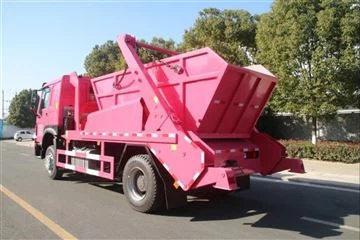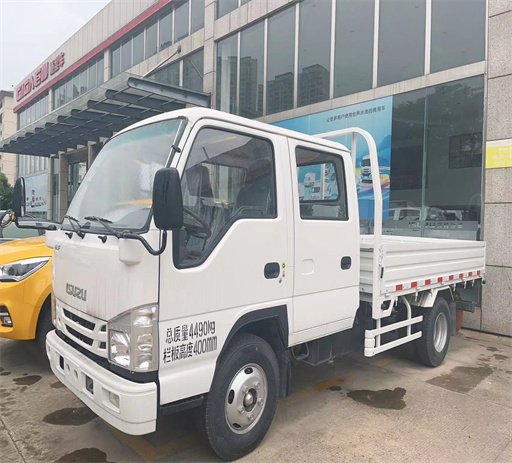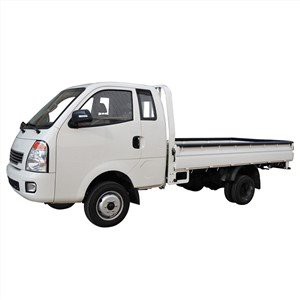Mini Rear Loader Garbage Truck: A Comprehensive Guide

Introduction to Mini Rear Loader Garbage Trucks
Waste management has become an essential service in urban and suburban areas as populations grow and cities expand. Among the various options for waste collection, the mini rear loader garbage truck has gained significant popularity. These compact vehicles are designed for efficient waste collection in tight spaces, making them ideal for residential neighborhoods, commercial areas, and urban environments. This article aims to provide a comprehensive understanding of mini rear loader garbage trucks, exploring their features, advantages, specific models, best practices, and more.
What is a Mini Rear Loader Garbage Truck?
A mini rear loader garbage truck is a type of waste collection vehicle that is characterized by its smaller size and rear loading mechanism. Unlike traditional rear loader trucks that can be quite large, mini rear loaders are designed to navigate narrow streets and alleys while effectively managing waste collection. They typically feature a compact design but still offer substantial capacity for waste storage.
Key Features of Mini Rear Loader Garbage Trucks

- Compact Size: Allows operation in confined spaces.
- Rear Loading Mechanism: Simplifies the lifting and dumping process.
- High Manoeuvrability: Easily navigates obstacles and tight corners.
- Environmentally Friendly: Often designed with lower emissions and fuel efficiency.
Advantages of Using Mini Rear Loader Garbage Trucks
Mini rear loader garbage trucks offer many advantages for waste management companies and municipalities. Here are some key points to consider:
1. Space Efficiency
The compact size of mini rear loaders makes them perfect for urban environments where space is limited. They can easily access alleyways, residential streets, and areas with heavy foot traffic.
2. Cost-Effectiveness
They typically come at a lower purchase price compared to larger trucks. The operational costs, including fuel consumption, maintenance, and repairs, are generally lower as well.
3. Environmental Impact
With advancements in technology, many mini rear loaders are equipped with eco-friendly features. This means they produce fewer emissions, contributing to cleaner air in urban areas.
4. Versatile Use
These vehicles are versatile and can be adapted for different waste types, including yard debris, recyclables, and general waste. They can also be used for special collections like bulk trash pickup and hazardous waste.
Specifications to Look for in Mini Rear Loader Garbage Trucks
When considering a mini rear loader garbage truck, it is important to understand the specifications that determine its efficiency and suitability for specific jobs. Here are some vital specifications to look for:
1. Load Capacity
The load capacity indicates how much waste the truck can carry. Typically, mini rear loaders have capacities ranging from 5 to 10 tons.
2. Engine Type
Look for trucks with high-efficiency diesel engines or alternative fuel options. They should provide adequate power for optimal performance while keeping emissions low.
3. Fuel Efficiency
Assess the miles per gallon (MPG) ratings. Efficient fuel consumption is crucial for minimizing operational costs.
4. Dumping Mechanism
Examine the dumping mechanism to ensure it is easy to operate, reducing turnaround time during waste collection.
Popular Mini Rear Loader Garbage Truck Models
| Model | Load Capacity (tons) | Engine Type | Fuel Efficiency (MPG) |
|---|---|---|---|
| Freightliner M2 | 7 | Diesel | 10 |
| Isuzu N-Series | 5 | Diesel | 12 |
| Hino 268 | 8 | Diesel | 11 |
| GMC W3500 | 6 | Diesel | 10 |
Operational Best Practices
To maximize the efficiency and lifespan of mini rear loader garbage trucks, it is essential to follow operational best practices.
1. Regular Maintenance
Routine checks should include engine oil, tire pressure, and hydraulic fluid levels. Keeping the truck in optimal condition prevents breakdowns and extends its life.
2. Training for Operators
Proper training for drivers ensures safe maneuvering, efficient loading, and adherence to waste management regulations.
3. Efficient Routing
Create efficient routes to minimize travel time and maximize collection efficiency. Use routing software to optimize the collection process.
4. Community Engagement
Engage with the community to improve waste collection practices and educate residents on proper waste disposal methods, potentially reducing the load for garbage trucks.
Environmental Impact of Mini Rear Loader Garbage Trucks
Mini rear loader garbage trucks not only contribute to effective waste management but also play a role in environmental conservation.
1. Reduced Emissions
Models designed with green technologies help to decrease harmful emissions, promoting cleaner air in urban environments.
2. Recycling Opportunities
These trucks can be adapted to better separate recyclables from waste, further supporting recycling initiatives.
3. Compact Design Benefits
Their smaller size allows them to collect waste without damaging road infrastructure or landscaping, preserving the urban environment.

Tips for Selecting a Suitable Mini Rear Loader Garbage Truck
Choosing the right mini rear loader garbage truck involves evaluating several factors that align with your specific waste management needs.
1. Assess Your Needs
Determine the areas you will service, the type and amount of waste you will collect, and the frequency of collections.
2. Compare Models
Consider the specifications of different models, including capacity, efficiency, and cost. Test drive the trucks if possible.
3. Consider After-Sales Support
Evaluate the manufacturer’s reputation for providing ongoing support and maintenance services.
4. Look for Customization Options
Some manufacturers offer customization to better fit unique needs, including body modifications and specific feature installations.
Frequently Asked Questions (FAQs)
1. What is the average cost of a mini rear loader garbage truck?
The average cost varies based on brand, specifications, and features but generally ranges from $50,000 to $100,000.

2. How often should mini rear loader garbage trucks be serviced?
It is recommended to perform maintenance checks every 3,000-5,000 miles or at least twice a year, depending on usage.
3. Can mini rear loader garbage trucks handle recycling materials?
Yes, many mini rear loader trucks can be equipped for dual collection, allowing for efficient handling of recyclables alongside general waste.
4. What are the typical lifespan and resale value of a mini rear loader garbage truck?
Most trucks can last 10-15 years with proper maintenance. Resale value can be 30-50% of the original price depending on condition and mileage.
5. Are mini rear loader garbage trucks suitable for rural areas?
While they excel in urban environments, mini rear loaders can also be beneficial in rural areas where space constraints and road conditions may vary.
6. What types of waste can be collected with mini rear loader garbage trucks?
These trucks can collect various types of waste, including general trash, yard debris, recyclables, and sometimes hazardous materials, depending on local regulations.
